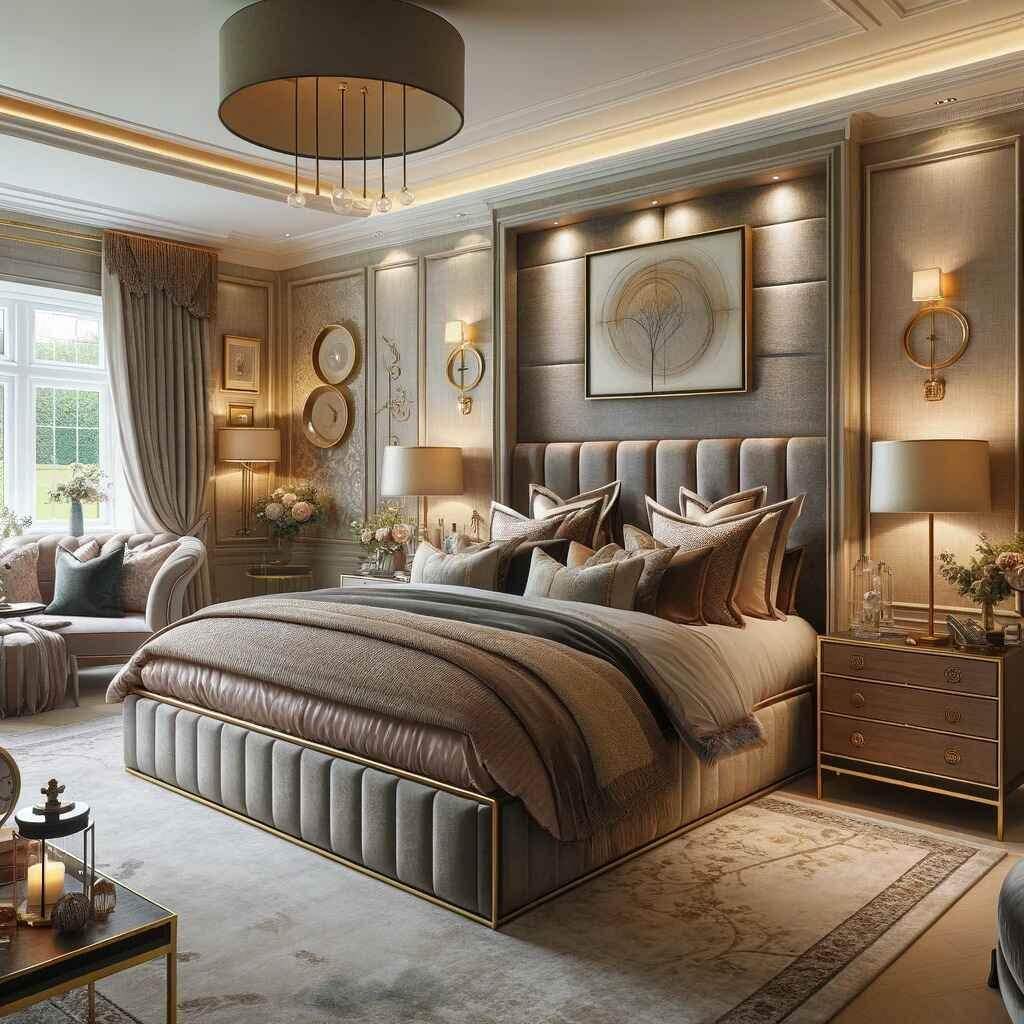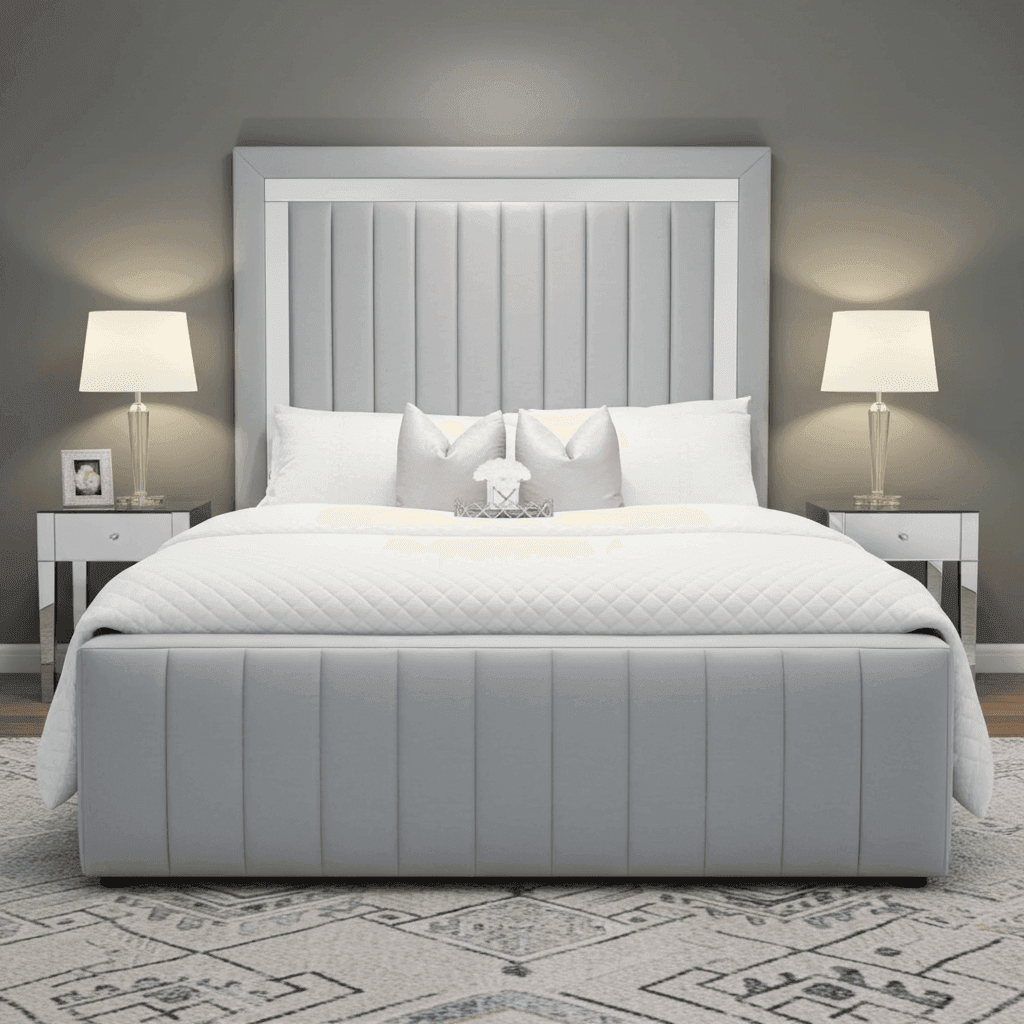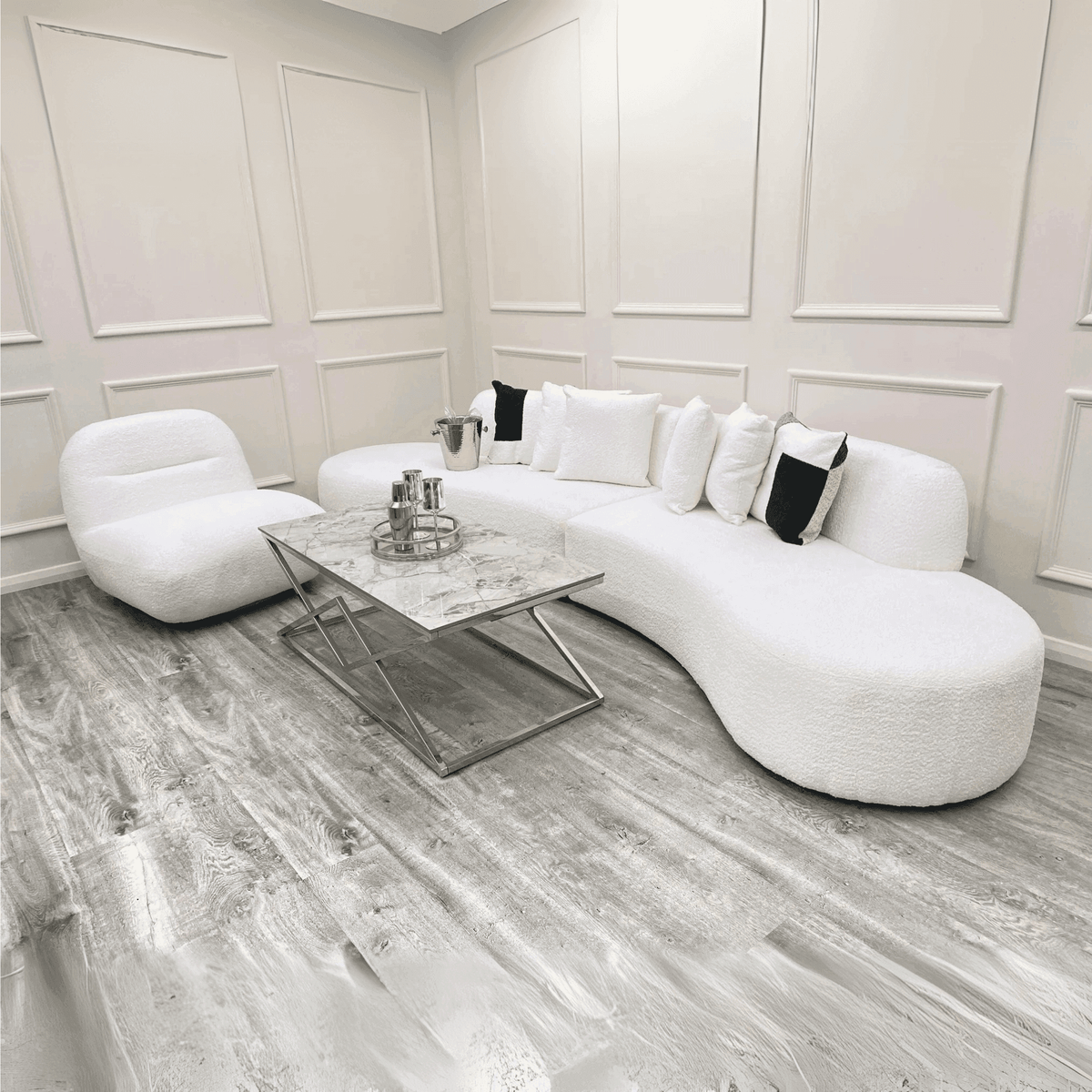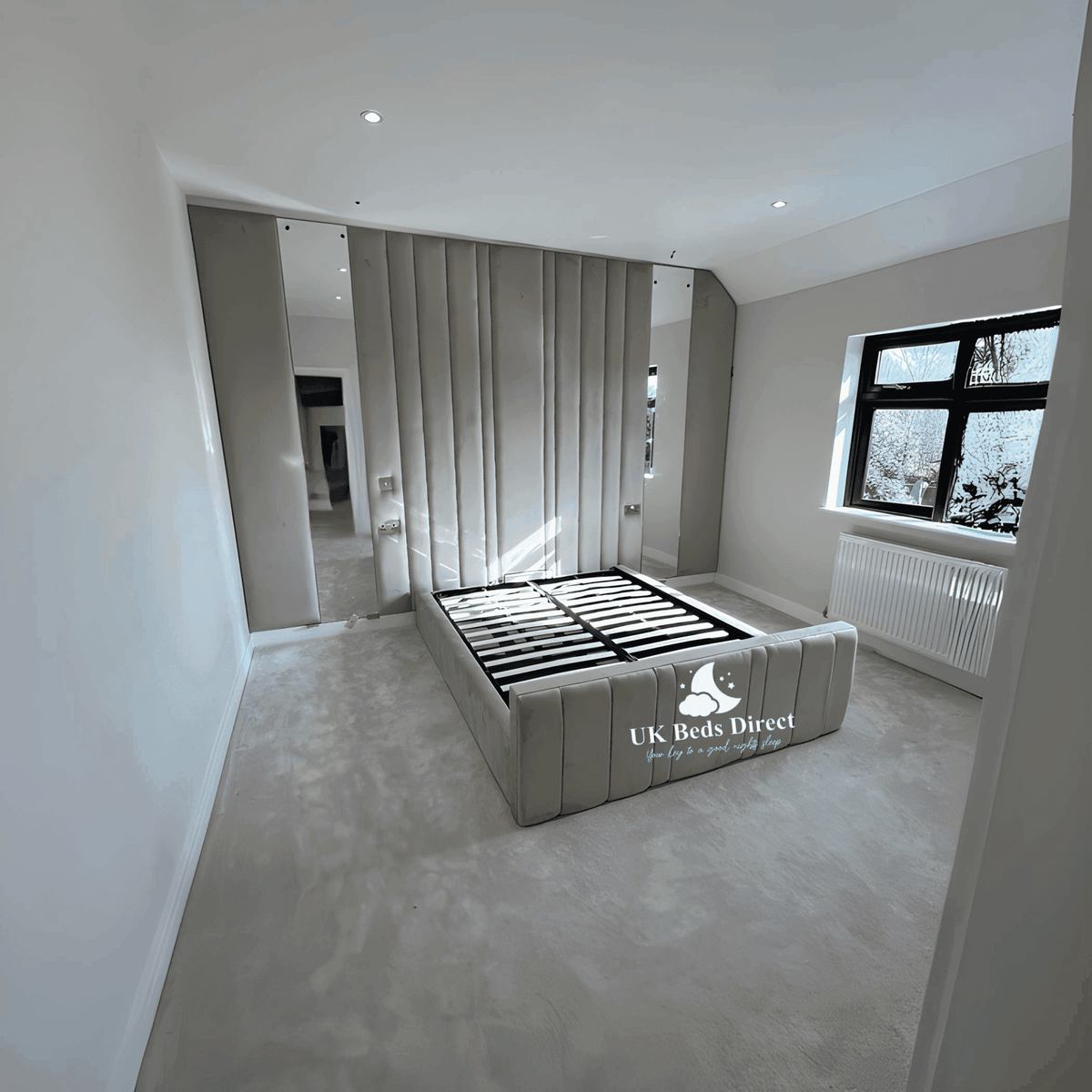Elevate Your Table Setting with an Elegant Table Runner
A table runner is a versatile soft furnishing option that can be used instead of a tablecloth or complemented, depending on your style. These elegant pieces of fabric are designed to gracefully drape across your table, whether you choose a vertical or horizontal orientation, adapting to the shape and aesthetics of your dining setup.
Incorporating a best into your table decor is a subtle yet impactful way to elevate the overall appearance. It acts as the final flourish that brings a polished and harmonious look to your table, enhancing the ambiance of your dining experience.
The Evolution of Best Table Runners
It has a fancy history that dates back to the Middle Ages, where it originated in the practicality and resourcefulness of medieval people. In those times, tablecloths were considered a symbol of aristocracy and elegance. However, keeping them pristine was a challenge, especially when boisterous and careless royal feasts were a common occurrence.
The medieval period was marked by lively gatherings where spills, drooling, and general messiness were frequent. It presented a problem, as tablecloths required significant care and attention to keep them clean. It was the ingenious women responsible for laundering these precious linens who came up with a brilliant solution – the table runner.
It was a long, narrow piece of cloth designed to protect the tablecloth from the inevitable spills and stains during feasts. By placing these runners over the tablecloths, they acted as a safeguard against the wear and tear of boisterous banquets. When the meal was over, the could be easily gathered up and washed, leaving the tablecloths underneath intact and spotless.
Qualities of Best Table Runners
These bring both visual appeal and practical benefits to your dining space. These versatile decor elements offer a range of valuable qualities that enhance your dining experience:
- Stain Prevention: These are a stylish shield against food and beverage stains. Placing dishes and glasses on the runner helps maintain your table's pristine appearance, as any accidental spills are absorbed by the runner, not the table surface.
- Heat Protection: Hot dishes can cause unsightly heat damage to your table. This act as a buffer, safeguarding your table from scorching marks and ensuring your furniture remains in excellent condition.
- Water Repellent: Many come with water-repellent properties, offering an extra layer of protection. This feature is especially beneficial if you're dining outdoors or have kids prone to spillage.
- Condiment Station: It provide a convenient, designated space for condiments, preventing spills and dribbles from reaching the table. It not only keeps your table clean but also adds a touch of organization to your dining setup.
Pros and Cons
Pros:
- Decorative Accent: These serve as eye-catching decorative accents, adding splashes of color, intriguing patterns, and delightful textures to your table setting. They effortlessly enhance the visual appeal of any space.
- Cost-Effective: If you're looking for an affordable way to refresh your table's appearance, These are a budget-friendly choice. They provide a stylish makeover without breaking the bank.
- Versatility: The beauty of These lies in their versatility. Easily adaptable to different occasions, you can change them to match specific themes or seasons, ensuring your table always looks fresh and inviting.
- Easy Maintenance: These are a practical choice as they require minimal cleaning effort. Many are machine washable, saving time and energy in the upkeep department.
- Showcasing Tabletop: By partially revealing the table's surface, These allow you to showcase the beauty of your table, especially if it's a valuable or aesthetically pleasing piece.
Cons:
- Limited Protection: While These add charm, they offer little protection against spills, heat, or scratches. If you're seeking comprehensive coverage, there might be better choices.
- Less Formal: In formal settings, These might need to convey the level of sophistication and formality that tablecloths do. They are better suited for casual or semi-formal occasions.
Tablecloths:
Pros:
- Complete Coverage: Tablecloths provide comprehensive coverage, shielding your table entirely from spills, heat, and scratches. They offer unparalleled protection for your furniture.
- Formal and Elegant: Often chosen for formal occasions, tablecloths exude elegance and sophistication, elevating the ambiance of any event or dinner party.
- Unifying Look: Tablecloths create a cohesive and polished appearance by covering the entire table, including its legs. They provide a unified canvas, enhancing the overall aesthetic of the dining area.
- Diverse Styles: With a wide array of materials, patterns, and colors, tablecloths offer endless options to match your decor style. You can find the perfect one to complement your interior theme.
Cons:
- Cost and Maintenance: High-quality tablecloths, while luxurious, can be costly investments. Additionally, some may require special care, such as dry cleaning, which adds to the maintenance effort.
- Less Versatility: Unlike These, tablecloths are less versatile and might only be suitable for some occasions or seasons. Their formal nature might not align with casual gatherings.
- Blocking Tabletop: Completely covering the table's surface, tablecloths conceal any decorative elements or the table itself, limiting the visibility of these features.
Can you use table runners on bed side tables?
These are typically designed on dining tables for decoration and protection of the table's surface. However, they can also be used creatively in other areas of your home, including bedside tables. The suitability of using a on a bedside table depends on your style and the aesthetic you want to achieve in your bedroom. Here's how you can use these on different types of beds:
- Ambassador bed: You can use a on a bedside table next to an Ambassador bed to complement the luxurious and elegant look of the bed. Choose that matches the bed's style and color scheme for a cohesive design.
- King-size bed: It is on a bedside table near a king-size bed can add a touch of sophistication and coordination to your bedroom decor. Opt for a runner that complements the overall bedroom theme.
- Modern beds: Using a this on a bedside table next to a modern bed can enhance the contemporary aesthetic of your bedroom. Select a runner with a sleek and minimalist design to complement the contemporary look.
- Double bed frame: It can be used on a bedside table near a double bed frame to create a stylish and coordinated appearance in your bedroom. Consider matching the runner with the color and style of the double bed frame.
- Bespoke bed: With a custom-made bed, you can choose a custom that perfectly matches the bespoke bed's design and your preferences. It allows for a tailored and unique bedroom decor.
- Panel bed: It can be used on a bedside table adjacent to a panel bed to enhance the room's visual appeal. Select a runner that complements the panel bed's design, whether traditional or contemporary.
Factors to Consider When Choosing a Table Runner
Selecting the best table runners involves more than just picking a design or color that matches your decor. To ensure your table enhances your table setting and lasts for years, consider these essential factors:
1. Size:
Choosing the right size of this is crucial for achieving an elegant look. A runner that is too long will trail onto the floor, while one that is too short won't cover the table adequately, leaving awkward gaps. A general rule of thumb is to pick a runner that is 12 inches longer than your table. This way, it hangs 6 inches on both sides, creating a balanced and visually appealing appearance. If you pair the runner with a tablecloth, ensure both pieces are the same length for a cohesive look.
2. Materials:
The material of your significantly impacts its aesthetic appeal and durability. Opt for These made from natural fibers, such as cotton and linen. These materials are not only classic and timeless but also absorbent and durable. Natural fiber runners add a touch of sophistication to your table and can withstand regular use, making them a practical choice for various occasions.
3. Care and Maintenance:
Proper care is essential to maintain the beauty and longevity of your table runner. While many runners are machine washable, it's crucial to follow the manufacturer's care instructions. When spills occur, especially those involving substances like candle wax, wine, or gravy, it's essential to address them promptly. For candle wax removal, placing the affected area in the freezer will make the wax peel off easily. For oily stains, dish soap works wonders. Additionally, consider using a peroxide-based enzymatic soak to treat stubborn stains effectively. Regular maintenance ensures your stays pristine, enhancing your dining experience for years.
Explore a Variety of Table Runner Styles
These are a versatile and decorative addition to your table setting. They come in various styles and materials to suit different occasions and preferences. Let's take a closer look at some of the popular types of these:
- Fabric These: These are the most common These available in materials like cotton, linen, silk, and more. They come in various patterns and colors to match your table setting, making them a versatile choice.
- Burlap: Burlap runners have a rustic and natural look, perfect for casual or outdoor settings, adding a touch of charm to your table.
- Lace: Lace runners are delicate and elegant, ideal for formal occasions like weddings and tea parties. They bring sophistication to your table.
- Quilted: Quilted runners create a cozy, homey atmosphere. They are often used during the fall and winter and can feature seasonal patterns.
- Holiday: Designed for specific holidays such as Christmas, Thanksgiving, and Easter, these runners feature holiday-themed patterns and colors to infuse a festive spirit into your table.
- Embroidered: Embroidered runners showcase intricate designs and can be highly decorative. They are best for formal occasions and can be personalized with monograms or custom designs.
- Custom: If you have a unique vision for your table setting, custom These allow you to choose the fabric, color, pattern, and size that perfectly matches your decor.
- Seasonal: These runners change with the seasons, providing a versatile way to decorate your table throughout the year. You can find designs for spring, summer, fall, and more.
- Patterned and Printed: Offering a contemporary and stylish look, these runners come in various patterns and prints, from stripes and polka dots to geometric designs.
- Tasseled or Fringed: Some runners feature tassels or fringe along the edges, adding a decorative and playful touch to your table setting.
- Vintage or Antique: Vintage and antique add a touch of nostalgia to your table. They often feature unique, one-of-a-kind designs that can spark interesting conversations.
- Minimalist or Solid Color: For a more understated and minimalist look, solid color These are a versatile choice that can be used in various settings.
- Ruffled: Ruffled runners add a feminine and decorative element to your table, making them perfect for events like bridal and baby showers.
Table Runner Length Guidelines
These can enhance the overall aesthetic of your table settings. To achieve the right look, it's essential to consider their length with your table and the occasion.
1. Formal Layout:
For formal settings, These should extend approximately 6 inches beyond each side of the table. This additional length creates a traditional, balanced look, especially when using a tablecloth with a 6" drop.
2. Visual Harmony:
To maintain visual harmony, ensure you’re the same length as your tablecloth. This consistency is crucial, as tablecloths are typically draped over the table's edge for a polished appearance.
3. Casual Atmosphere:
In more casual settings or when not using a tablecloth, a shorter is often more suitable. The overhanging section is unnecessary, allowing for a more relaxed ambiance.
4. Occasion Matters:
The decision to have an overhang or not depends on the occasion and the desired effect. Adding an overhang can elevate the elegance of formal gatherings, such as wedding receptions, but it's more optional for less formal gatherings.
5. Decor and Design:
Consider your overall decor and design when choosing the right table length. Matching the runner's length to the tablecloth can create a pleasing, symmetrical arrangement.
6. Customization:
For a more informal look, you can tailor to fit the tabletop's dimensions. This approach can work well when paired with complementary tablecloths and centerpieces.
7. Versatile Overhangs:
Using overhangs largely depends on personal preference and the event's nature. Decorative accents can accentuate both formal dinner parties and casual family gatherings.
Shorter Table Runners for Casual Elegance
When hosting a relaxed or informal gathering, shorter These are the perfect choice. In such settings, you can opt for a runner that matches the table's length or is slightly faster. However, it's essential to maintain a minimum overhang of at least 6 inches on either side of the runner. This advice is beneficial when using runners in a more formal context, such as when combined with a tablecloth or if the runner is adorned with tassels.
Shorter These offer more than just aesthetics; they bring functionality to the table. By diverting the eye away from the table's edges and towards the center, they contribute to a captivating centerpiece presentation. The decreased length of the runner also creates natural gaps between it and the tabletop. It not only reduces the visual clutter but also enhances the overall ambiance.
Table Runner Sizes: A Guide for Perfect Fit
When selecting the perfect , understanding the correct dimensions is critical to achieving an elegant and balanced look. Here's a comprehensive guide on choosing the appropriate best These sizes for different lengths.
Table 6ft in length:
For a 6-foot-long table, your ideal length for a runner should be at least 84 inches. It allows for a subtle overhang of six inches on either side, adding a touch of sophistication to your table setting. To ensure the runner complements the table's width, it should be one-third of its overall width.
Consider a rectangular dining table 6 feet long and 3 feet wide. In this case, the runner's width should be one-third of 3 feet, which equals one foot or 12 inches. This balanced proportion creates a harmonious visual effect, making your table arrangement aesthetically pleasing.
Table 8ft in length:
For an 8-foot table, opt for a at least 108 inches long. This generous length not only covers the entire table but also provides a six-inch overhang on each side, adding an elegant finishing touch. The runner should be one-third of the table's length, meaning 32 inches.
To calculate this, convert the 8-foot length to inches, resulting in 96 inches. By adding an extra 12 inches (6 inches on each side) to ensure the overhang, you get a total length of 108 inches. Regarding the runner's width, following the one-third rule provides a balanced look. For a 3-foot-wide table, your runner's width should be 12 inches, creating a cohesive and visually appealing table setting.
Measuring and Decorating a Round Table with Style
When measuring and dressing up circular tables, the same fundamental rules that apply to rectangular or square tables also hold. Regardless of their shape, you'll still use a rectangular or elongated fabric to cover the tabletop's surface. To get started, measure the table's circumference and keep this figure handy for future reference. In the case of a circular table, counting from one side to the other should be done by crossing the center of the table. Allow for a little extra by adding 6 inches to each side, creating a graceful overhang.
Now, let's talk about These. Ideally, the runner's width should be at least one-third of the table's overall length. This ensures a balanced and aesthetically pleasing look. To prevent placemats from overlapping each other, take a moment to measure the available space on your table. Due to the rounded shape of the table, the available surface area is slightly reduced. To accommodate this, consider reducing your measurement to one-quarter of the table's total width, ensuring ample room for your dinner dishes.
FAQ
When should you use a table runner?
There are no rules on when you should use in your home, but there are different types of These that are better suited for either formal or informal gatherings. Traditional These are made of a smooth and shiny texture.
Common materials used for a formal setting would be silk or a similar soft material. Although standard These can come in any color, the most common shades are ivory, neutral tones, whites, or pastels.
Where can I use a table runner?
There's no rule on where you can and cannot place. It depends on the shape and layout of the table you want to decorate. Some familiar places and table shapes for These to be incorporated include:
- Dining tables (of course).
- Coffee tables.
- Outside tables, such as patio tables.
- Hall tables.
- End tables.
- Round tables.
- Square tables.
- Rectangular tables.
- Oval tables.
How is Table runner useful?
These are helpful for various reasons, both practical and aesthetic. Here's how can serve as a valuable addition to your table setting:
Decoration: These are primarily used to enhance the visual appeal. They can complement the room's decor and set the tone for the meal or event.
Protection: These offer protection for your table's surface. They act as a barrier between hot dishes, serving platters, and the table, preventing heat damage, scratches, and stains. This protection is essential for delicate or expensive table surfaces.
Definition: These help define the table's focal point. They create a visual anchor for centerpieces, place settings, and tableware. It can make your table setting more attractive and organized, providing a clear focal point for guests.
Versatility: These are versatile and can be used on various occasions. You can change to match the theme or style of a particular event or season. For example, you can have festive runners for holidays, elegant ones for formal dinners, and casual ones for everyday dining.
Easy Maintenance: These are easy to maintain. Most of them are machine washable or require simple spot cleaning. It makes them a practical choice for those who want to keep their dining area looking fresh and appealing without a lot of effort.
Cost-Effective Decor: These are an affordable way to update your table setting without needing a complete tablecloth. They offer a cost-effective way to change the look and feel of your table whenever you like.
Protection from Spills: If a spill occurs during a meal, a can absorb some of the mess, protecting the table underneath. This can be particularly useful if you have children or serve messy dishes.
Cohesive Look: These can help create a coherent look by tying together various elements of your table setting, such as placemats, napkins, and centerpieces. It adds to the overall aesthetic appeal.
Aesthetic Enhancement: Many people praise These for their ability to enhance the overall look of a table. They appreciate the decorative aspect of These, mentioning how they add color, style, and texture to their dining space. Users often express that These have transformed their tables into beautiful centerpieces.
What's the Difference Between a Table runner and Tablecloth?
A dining table runner is a long-length narrow piece of cloth or any other material primarily placed in the center of the table. Whereas tablecloths or table throws cover the whole area of the table
Conclusion
In conclusion, a table runner is a versatile and decorative addition to your table setting. It serves both practical and aesthetic purposes, offering protection against spills, heat, and scratches while enhancing the overall appearance of your dining space. These come in various styles and materials to suit different occasions and preferences, and they can be a cost-effective way to update your table's look. When choosing a table runner, consider size, materials, and care instructions to ensure it complements your table setting. Overall, These are a valuable addition to any dining experience, offering style and functionality.





0 comments